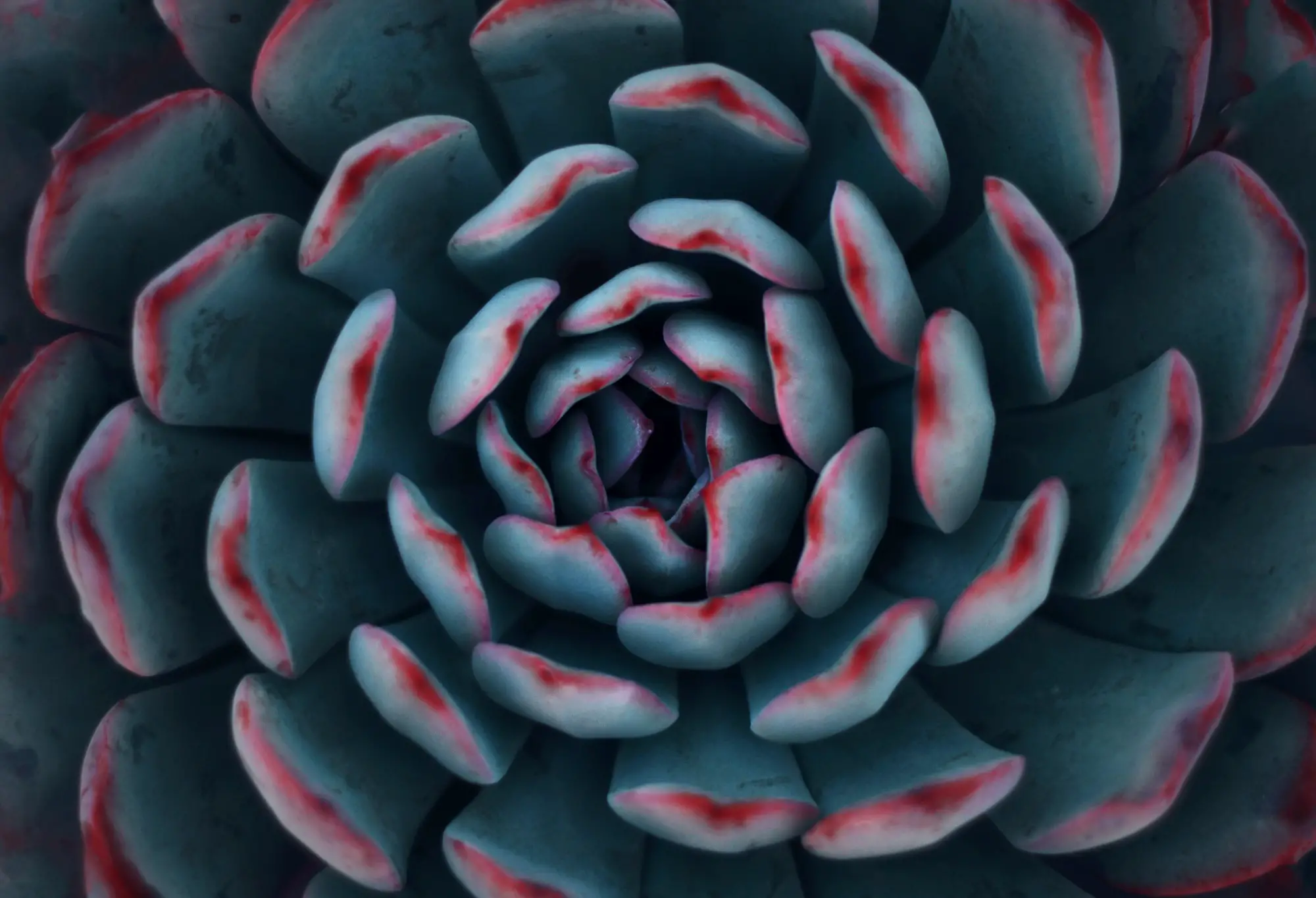Echeverias are very popular succulents at the moment, and it is easy to see why. These plants come in a variety of colors and interesting shapes. This blog post describes some of my favorite types of Echeveria.
About Echeverias
Echeveria is a genus that is comprised of over 150 species of succulent plants belonging to the Crassulaceae family. These plants are native to semi-desert areas of Mexico.
A Swiss botanist named Augustin Pyramus de Candolle first described the species belonging to the Echeveria genus. He named the genus in honor of a Mexican botanical artist named Atanasio Echeverría y Godoy.
1. Echeveria affinis

Echeveria affinis is a low-growing Echeveria that is well-known for the dark color that the leaves turn when exposed to bright light. If the plant is placed in a location that does not receive a lot of sunlight, the leaves will turn a greener hue. During the spring and summer, these plants produce red blooms.
2. Echeveria ‘Afterglow’

Echeveria ‘Afterglow,’ which is a hybrid between Echeveria cante and Echeveria shaviana, has wide leaves that are pinkish-purple in color. The leaves exhibit a more vibrant color when these plants are placed in a location that is exposed to bright light. However, they will grow well in partial shade as well. This plant hybrid was developed by Don Worth, an avid succulent grower and professional photographer in the San Francisco Bay area.
3. Echeveria agavoides

Echeveria agavoides, which is commonly referred to as Molded Wax Agave, is a very popular succulent species. Each rosette can grow to a width of 12 inches. Bright sunlight and water stress can cause the edges of the leaves to turn red.
4. Echeveria agavoides ‘Lipstick’
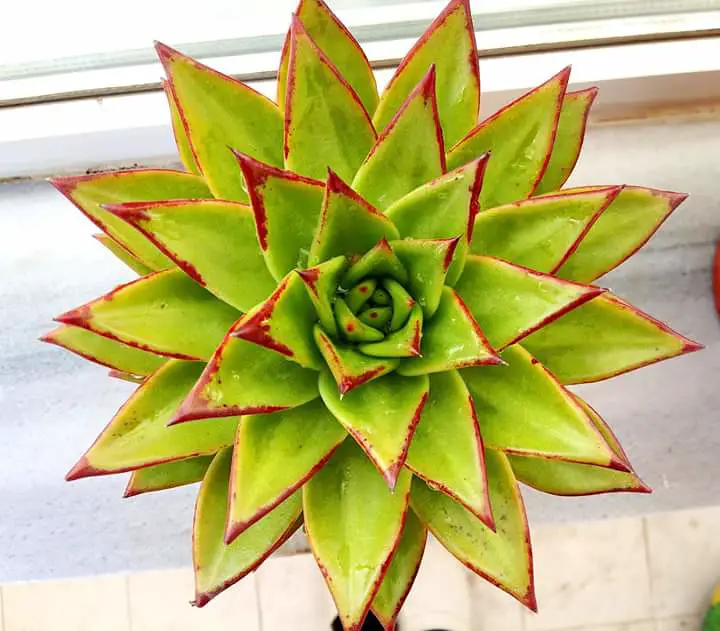
Echeveria agavoides ‘Lipstick’ is a cultivar of succulent #3 on this list. This plant produces offsets quite easily, and each rosette can grow to a size of 12 inches. During the spring and summer, this plant will produce red flowers that have a yellow tip.
5. Echeveria ‘Alta May’

Echeveria ‘Alta May’ is a type of Echeveria that was hybridized by D. Wright.
6. Echeveria ‘Atlantis’
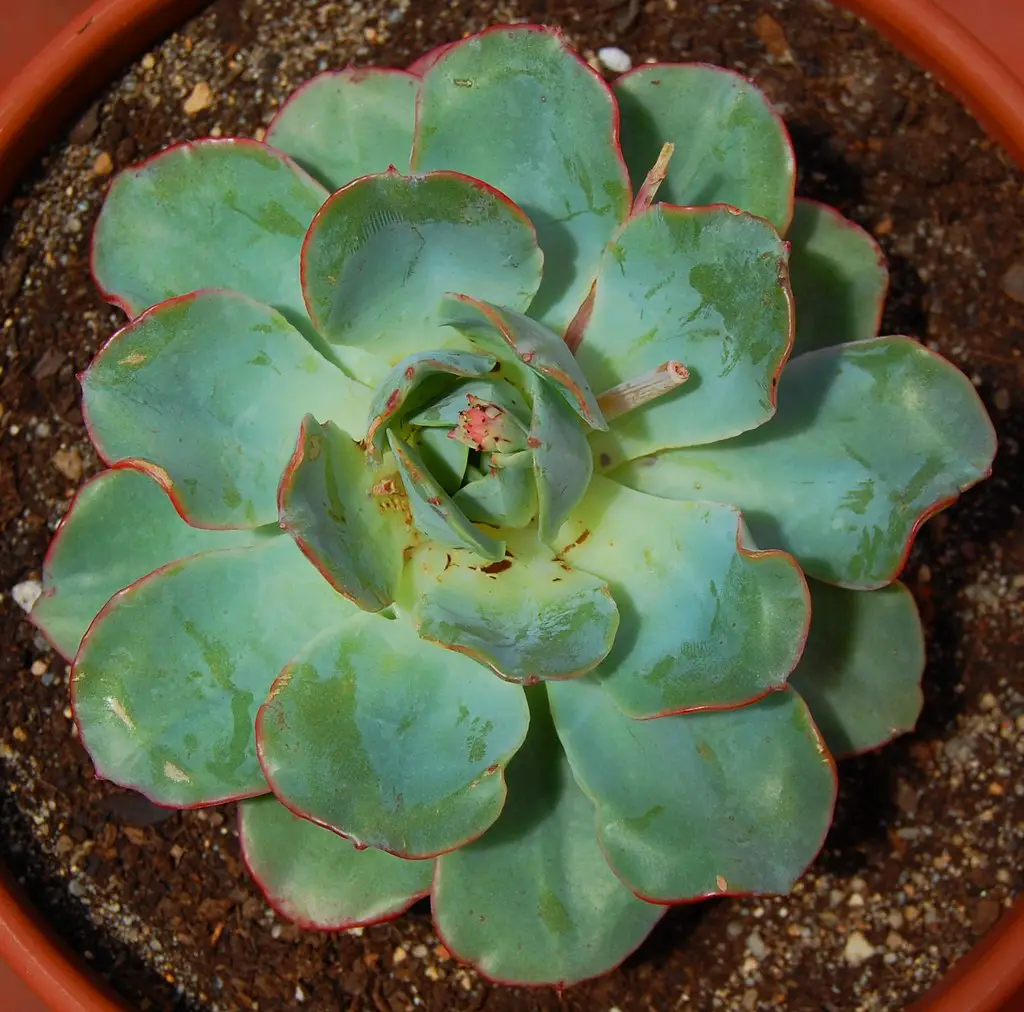
Echeveria ‘Atlantis’ is a blue-green succulent with wide leaves that form rosettes. The tips of the leaves turn a lovely pink color if exposed to enough sunlight.
7. Echeveria secunda ‘Azulita’
Echeveria secunda ‘Azulita’ is a type of succulent that has powdery blue leaves and pink tips. This plant offsets freely meaning that it will form clumps of rosettes. Each rosette will grow to a diameter of 6 inches.
8. Echeveria ‘Black Knight’
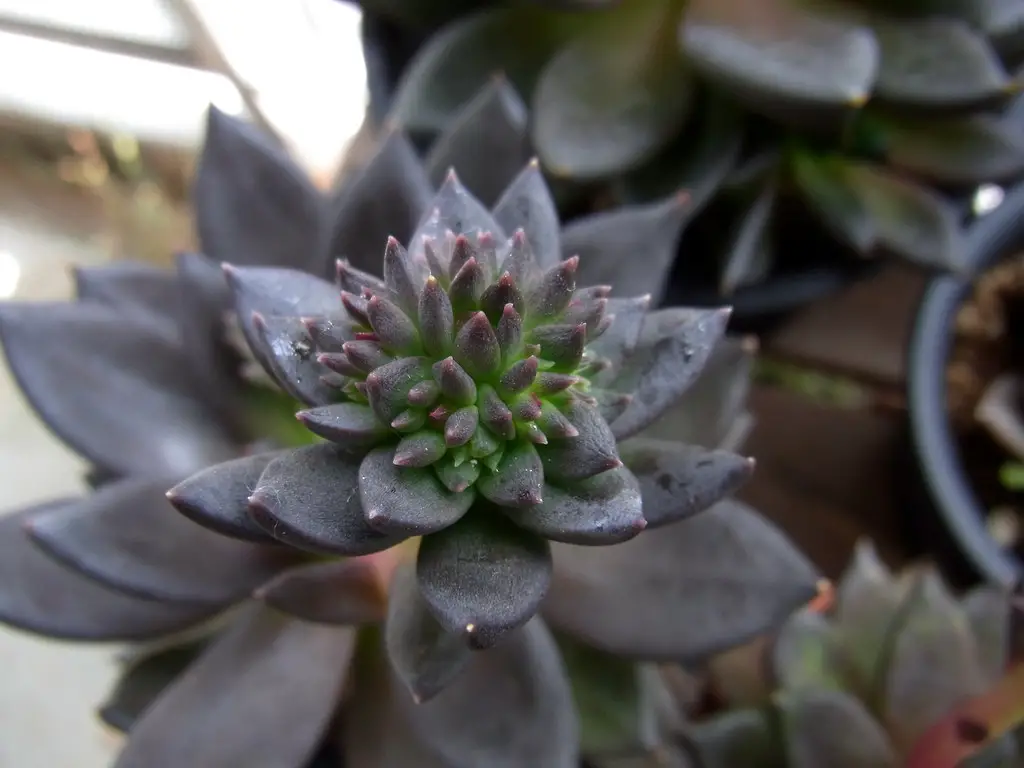
Echeveria ‘Black Knight,’ which is also known as Mexican Hens and Chicks, is a succulent with dark – almost black – purple leaves. It is one are the darkest Echeverias. New leaves forming in the center of the rosette will be lime green. As the leaves mature, they will turn a dark purple color. However, the plant must be exposed to bright light for the plant to maintain its dark color. Low-light conditions will cause the plant to turn green.
9. Echeveria ‘Black Prince’
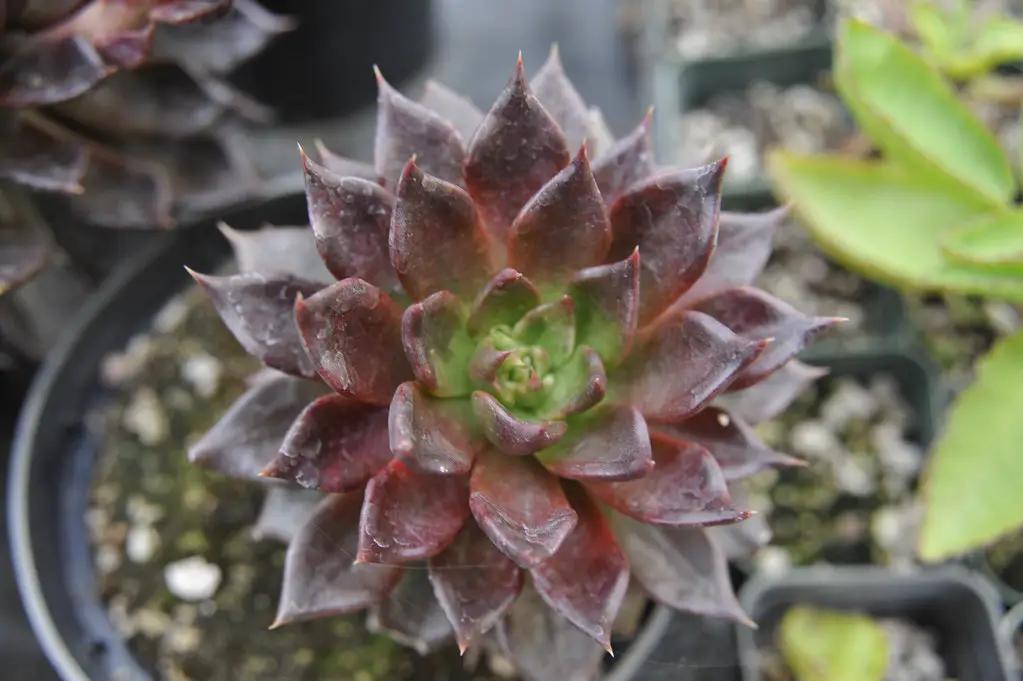
Echeveria ‘Black Prince’ is another type of succulent that has dark purple leaves. This plant can be successfully grown indoors, but they will typically lose their dark color. Like Echeveria ‘Black Knight,’ new leaves will be lime green and turn a dark purple color as they mature. Echeveria ‘Black Prince’ will produce a red flower during the fall and early winter.
10. Echeveria chihuahuaensis
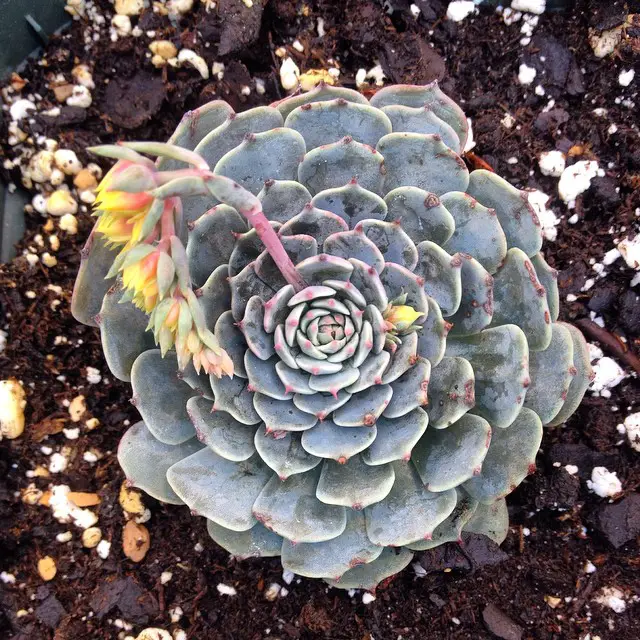
Echeveria chihuahuaensis looks like a smaller version of Echeveria colorata (Echeveria #12 on this list). The rosette grows to a diameter of about four inches. This plant does well in full sun. The tips of the leaves will turn a more intense pink color when exposed to more sunlight. During the spring and summer, these plants will produce pink and yellow blooms. Unlike many of the other Echeverias on this list, this plant does not produce offsets freely.
11. Echeveria ‘Chroma’

Echeveria ‘Chroma’ is a hybrid succulent. The rosette is comprised of leaves with various shades of blue, green, purple, and yellow. Although many types of Echeveria change colors with different amounts of light exposure, these plants’ appearance vary significantly depending on the amount of light. The middle of the plant will typically be lighter in color than the rest of the plant.
12. Echeveria colorata
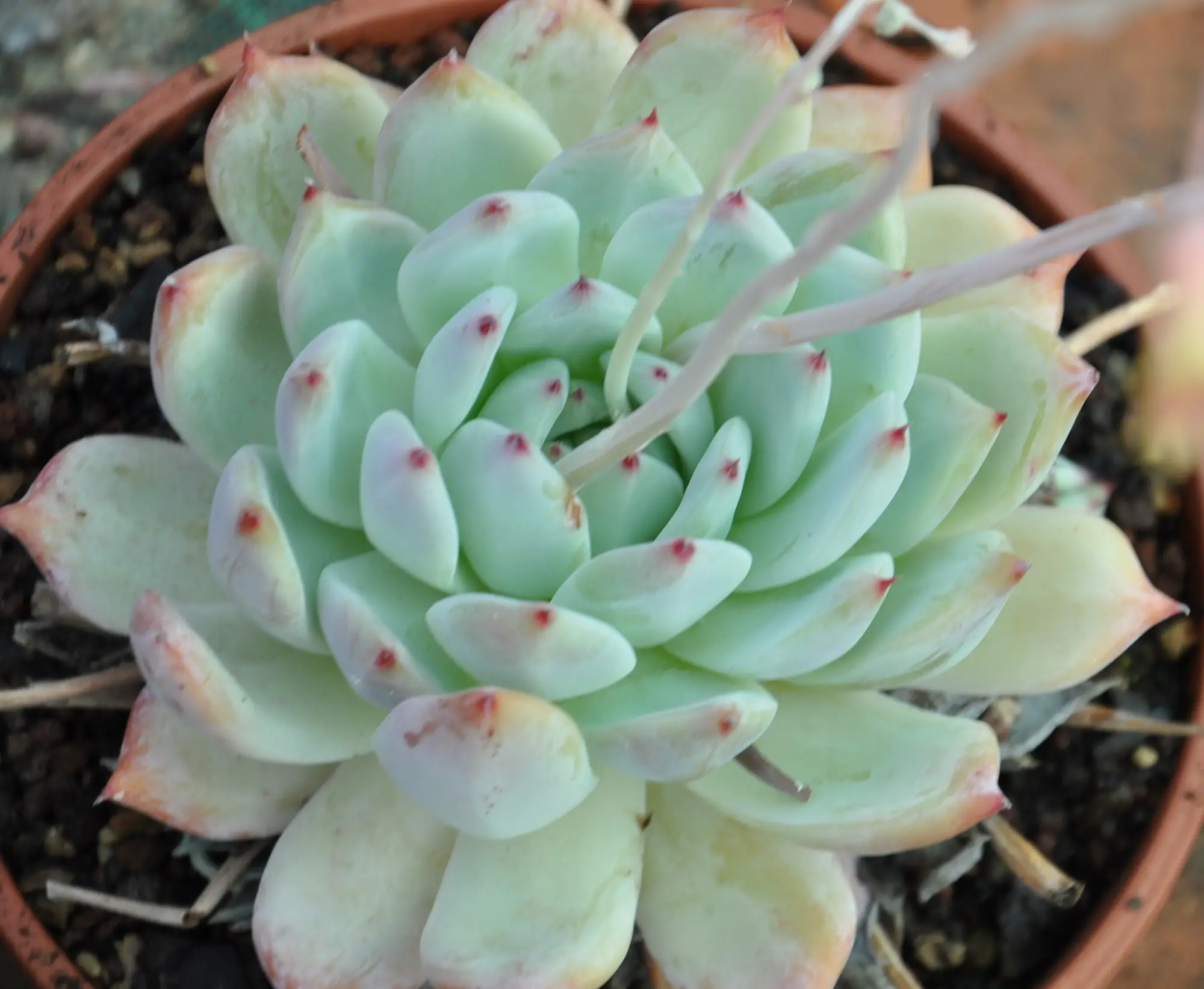
Echeveria colorata is a large Echeveria species that can grow to a diameter of 16 inches. The tips of the leaves will turn a pink color if exposed to plenty of bright sunlight. Echeveria colorata produces offsets freely. The offsets will eventually form a clump/mound. This plant will produce yellow flowers during the spring months.
13. Echeveria ‘cubic frost’
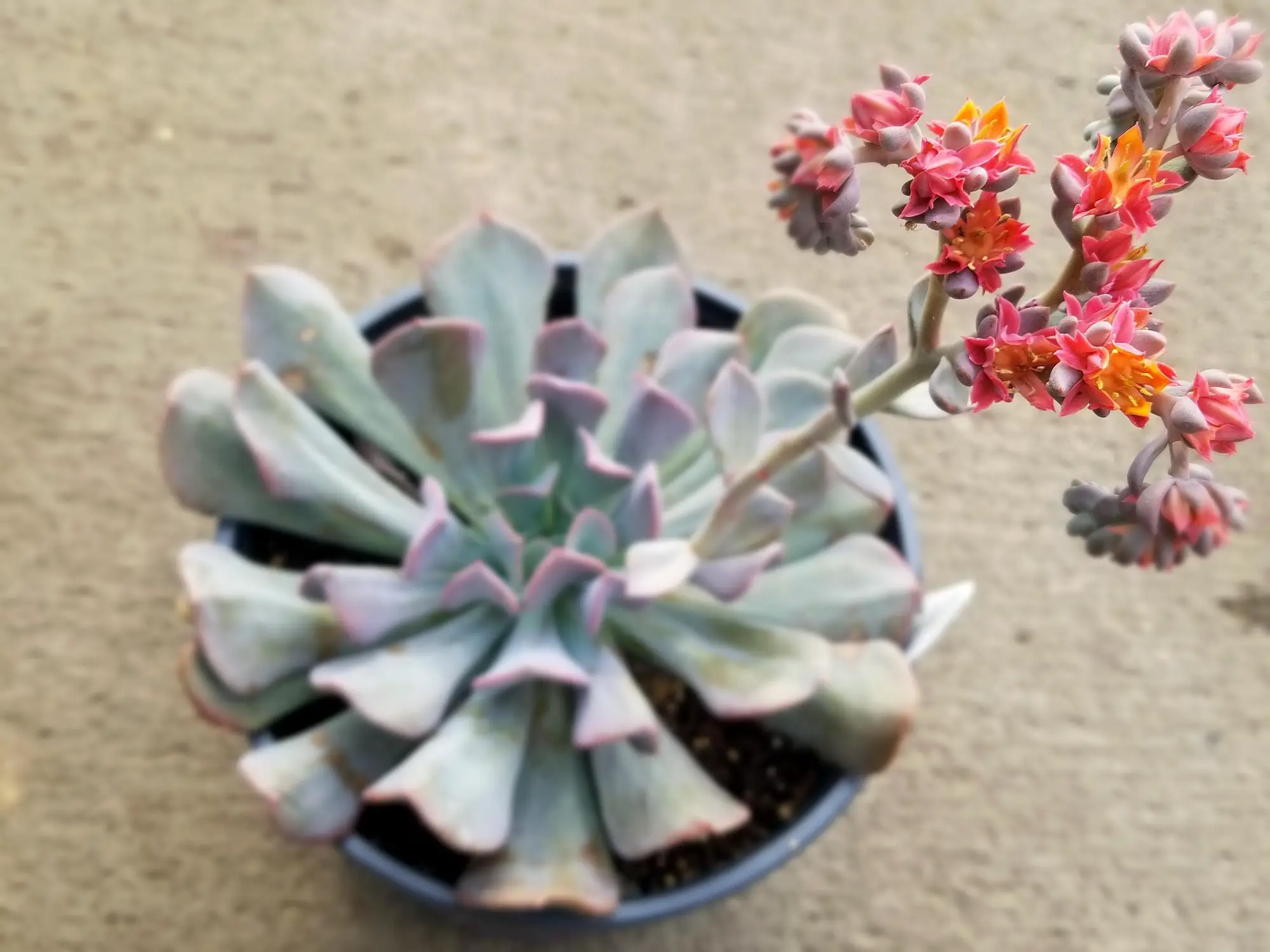
Echeveria ‘cubic frost’ is a cultivar that is characterized by wavy leaves. The rosettes grow to a width of about 8 inches. This succulent grows quickly and will produce offsets freely. Echeveria ‘cubic frost’ blooms during the spring and summer months.
14. Echeveria derenbergii

Echeveria derenbergii, which is commonly referred to as Painted Lady, is a succulent species comprised of triangular leaves that form a small rosette. Each rosette grows to a diameter of about 3 inches making it one of the smaller Echeverias. During late winter to summer, this plant produces yellow flowers with red tips.
15. Echeveria ‘Doris Taylor’

Echeveria ‘Doris Taylor’ is a succulent that has leaves covered by fuzzy white hairs. These white hairs are called glochids and can cause skin irritation. This Echeveria can be grown indoors and outdoors in USDA Hardiness Zones 9a through 11. When this plant is exposed to a lot of sunlight, the tips turn a lovely red color. Like other Echeverias, this plant can be propagated from leaves. However, the leaves will propagate more slowly than smooth-leaved varieties.
16. Echeveria elegans

Echeveria elegans, which is commonly known as Mexican Snowball or White Mexican Rose, is a green succulent with rosettes that grow to a height of four inches. During ancient times, this plant was believed to drive away evil spirits. Mexican snowball will produce many offsets and grow as a clump of rosettes.
17. Echeveria funkii
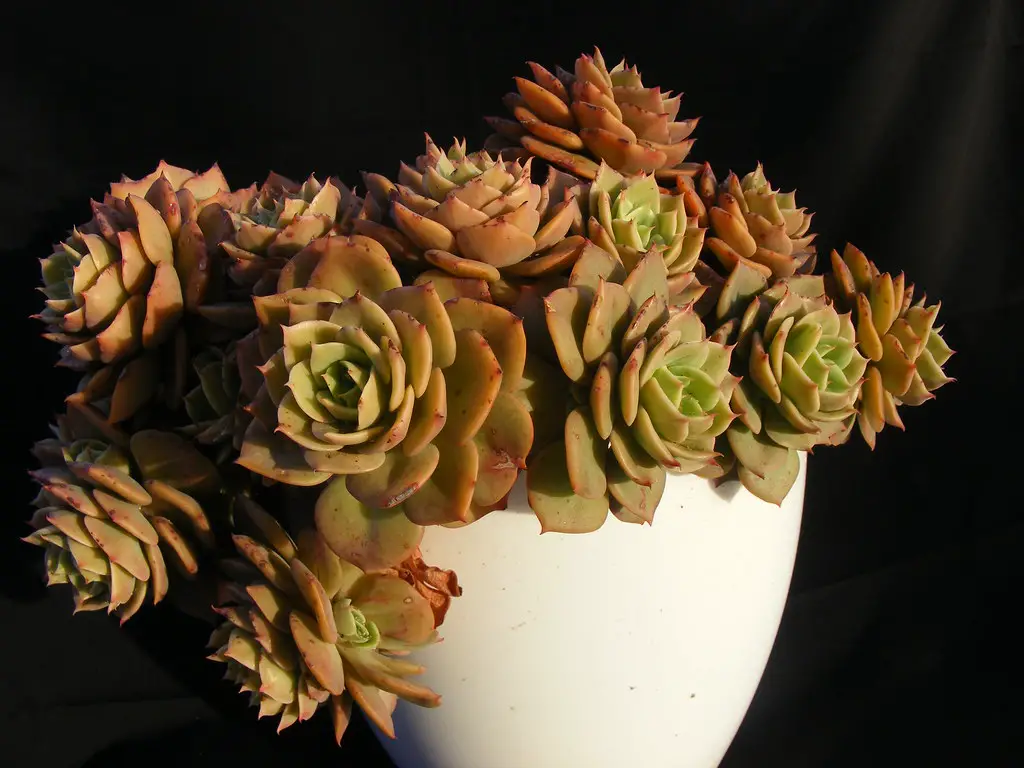
Echeveria funkii forms a rosette comprised of greyish green leaves. The plant will turn an orange color when exposed to bright light during the summer.
18. Echeveria ‘Ghost Buster’
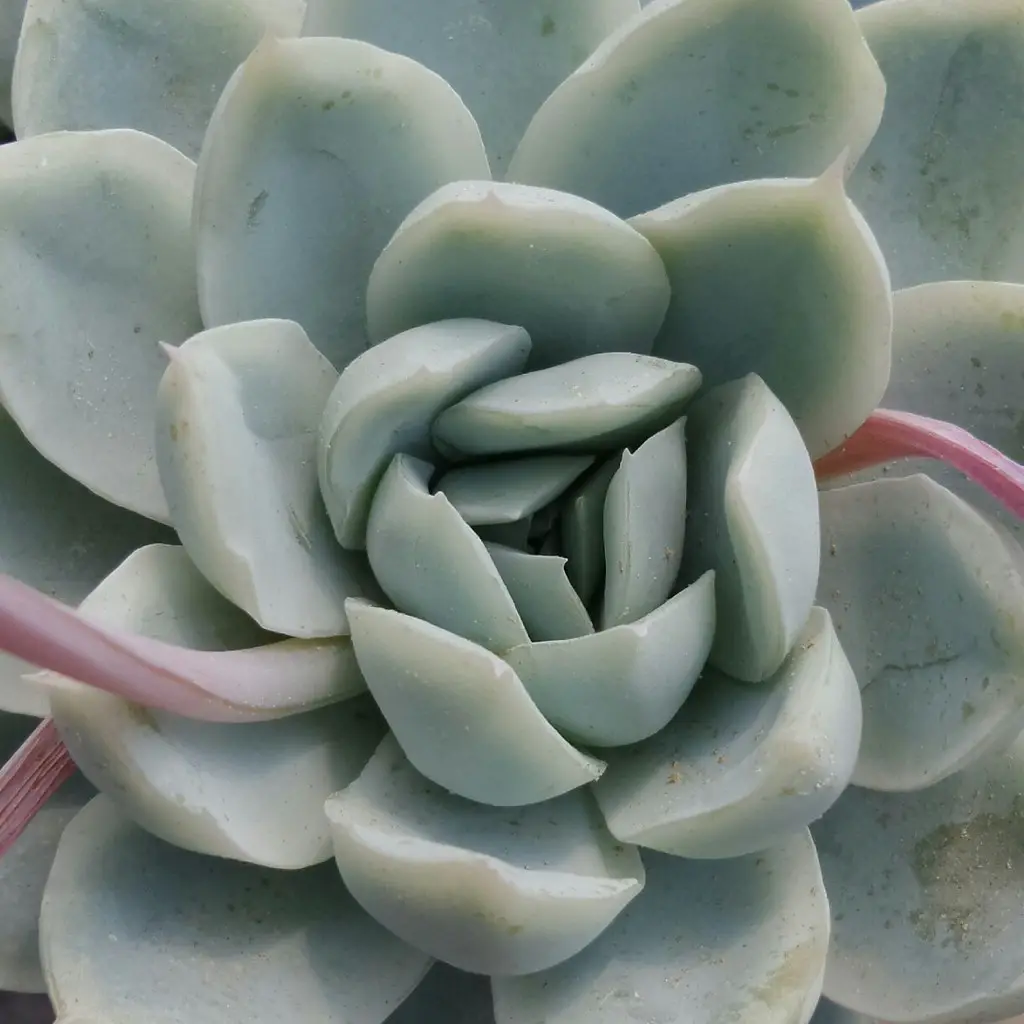
Echeveria ‘Ghost Buster’ is a hybrid that has by pale blueish-green leaves. It is a hybrid of Echeveria elegans and Echeveria colorata. This succulent can be propagated by stem cuttings and leaves. Because it is a hybrid, it can not be propagated by seed. Unlike many other types of Echeveria, Echeveria ‘Ghost Buster’ has proven to be frost hardy.
19. Echeveria glauca
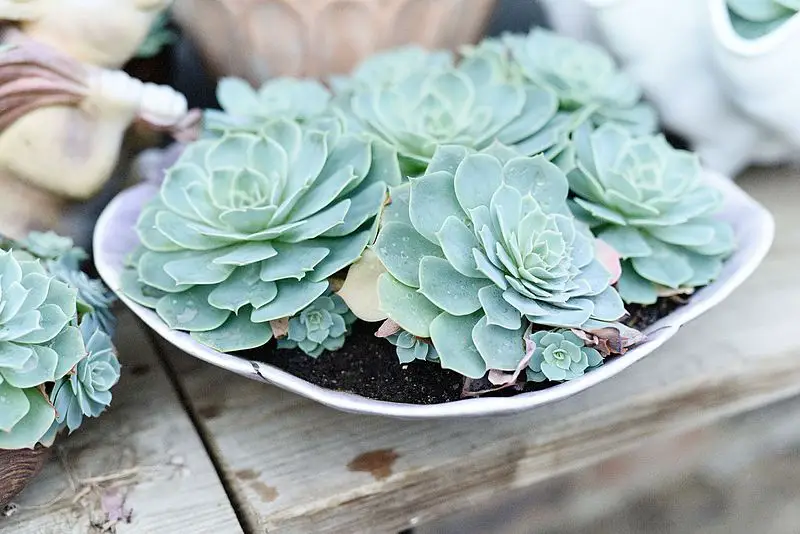
Echeveria glauca, which is commonly knowen as the Blue Hens and Chicks, is a type of succulent that form flat rosettes. The size of each rosette can be grown to a size of 8 inches. Like other types of Echeverias, this plant propagates freely and will form clusters of many offsets.
20. Echeveria harmsii
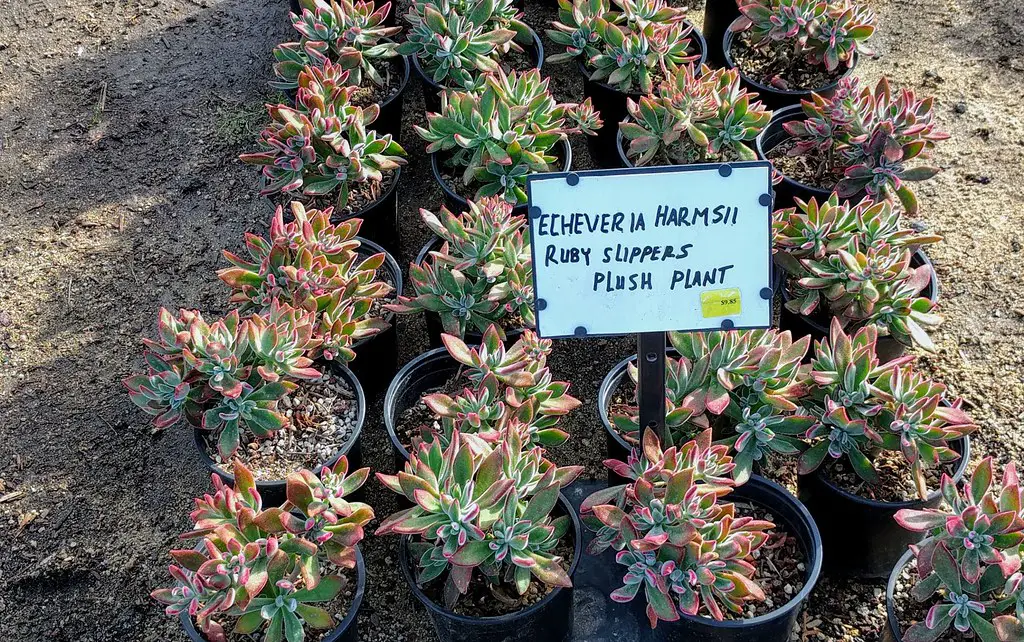
Echeveria harmsii, which is commonly known as Plush Plant or Red Echeveria, is a type of succulent that has green leaves with pink tips. The leaves have a velvet texture. During the summer, Echeveria harmsii produces bright orange flowers. This plant is not cold hardy and does not do well in temperatures below 40°F. This succulent can be propagated by stem cuttings, leaves, and seeds.
21. Echeveria ‘Imbricata’
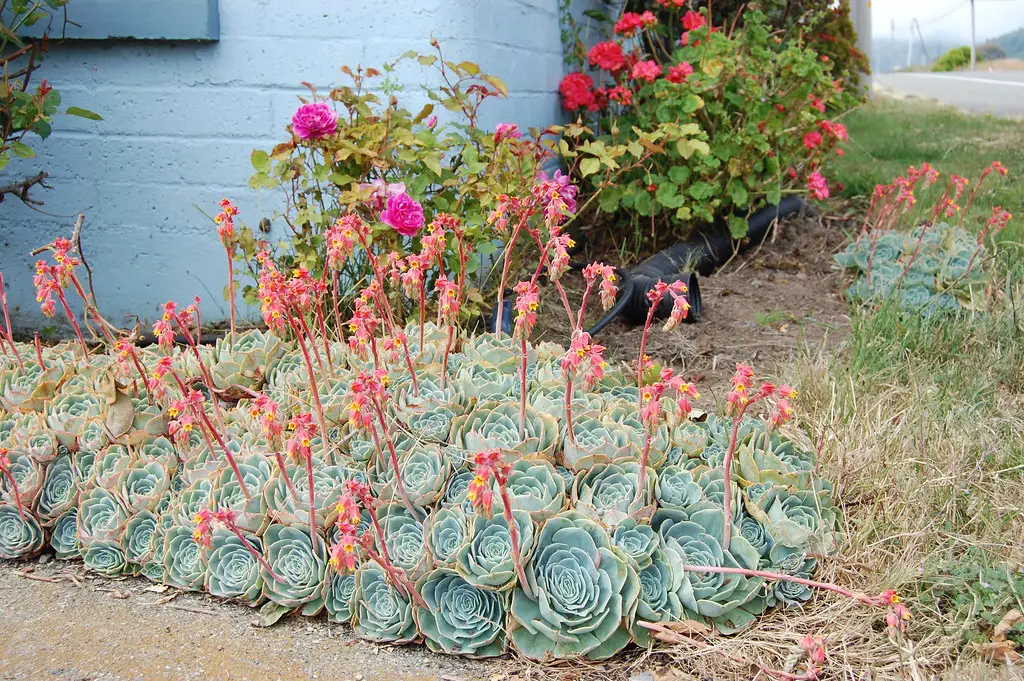
Echeveria ‘Imbricata’ is one of the oldest Echeveria hybrids. This hybrid cultivar was created during the early 1870ss by Jean-Baptiste A. Deleuil of Marseilles (Rue Paradis). Echeveria ‘Imbricata’ is a cross between Echeveria secunda and Echeveria gibbiflora ‘Metallica.’ This succulent forms rosettes that grow to be 4 to 8 inches wide and produces pink flowers during the summer months.
22. Echeveria lauii
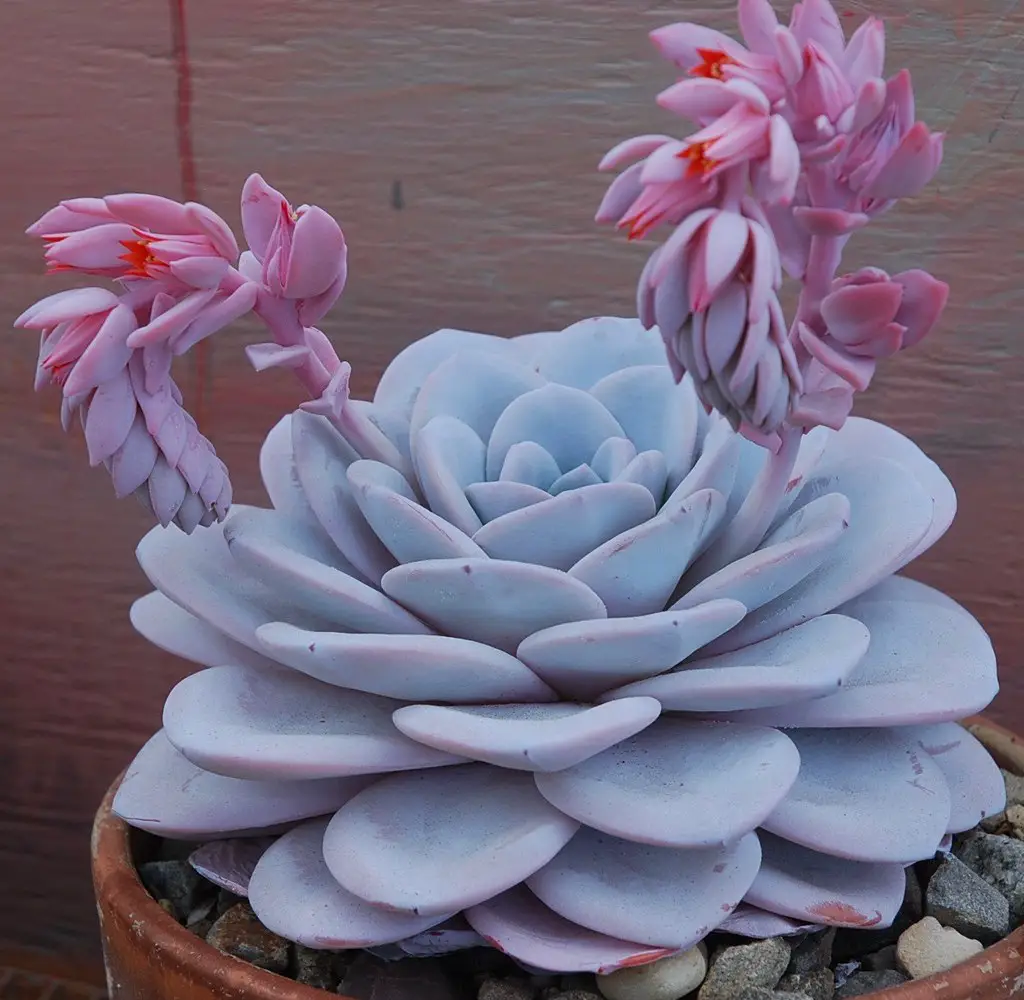
Echeveria lauii is a slow-growing, unbranched succulent that is native to Oaxaca, Mexico. It is known for its distinctive pink color. The leaves have a powdery coating. If you touch the leaves, your fingers will make marks in this powdery coating. The plant will grow to a width of about six inches. Echeveria lauii can be grown outdoors in USDA Hardiness Zones 9b through 11b.
23. Echeveria leucotricha
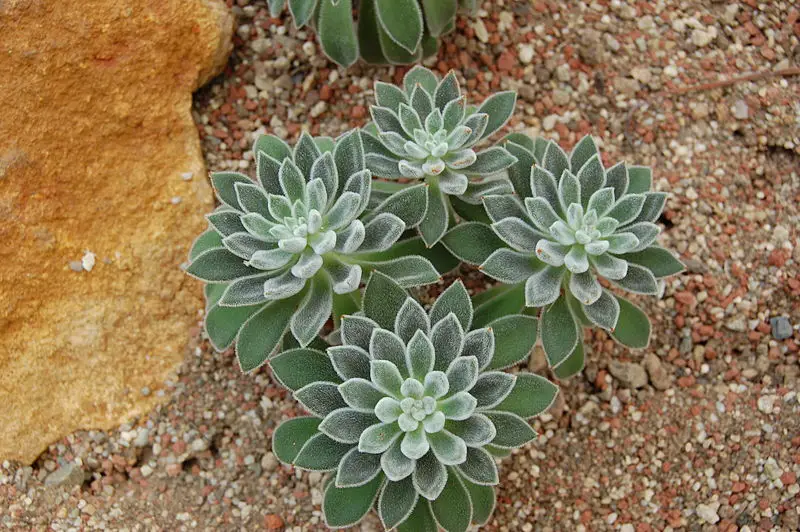
Echeveria leucotricha, which is commonly known as the Chenille Plant is a type of succulent that forms sub-braches that grow to a length of about 6 inches. This succulent is known for being covered with small white hairs that turn brown at the tip of the leaves. Chenille Plant produces red blooms during the fall and winter.
24. Echeveria lilacina

Echeveria lilacina is a slow-growing succulent with shovel-shaped leaves. This succulent is native to Mexico where they grow on cliff faces that receive very little rain. As a result, Echeveria lilacina has adapted to be drought and heat tolerant. The rosette grows to a width of about 7 inches. Echeveria lilacina will produce pink flowers during the late winter or early spring.
25. Echeveria ‘Lola’
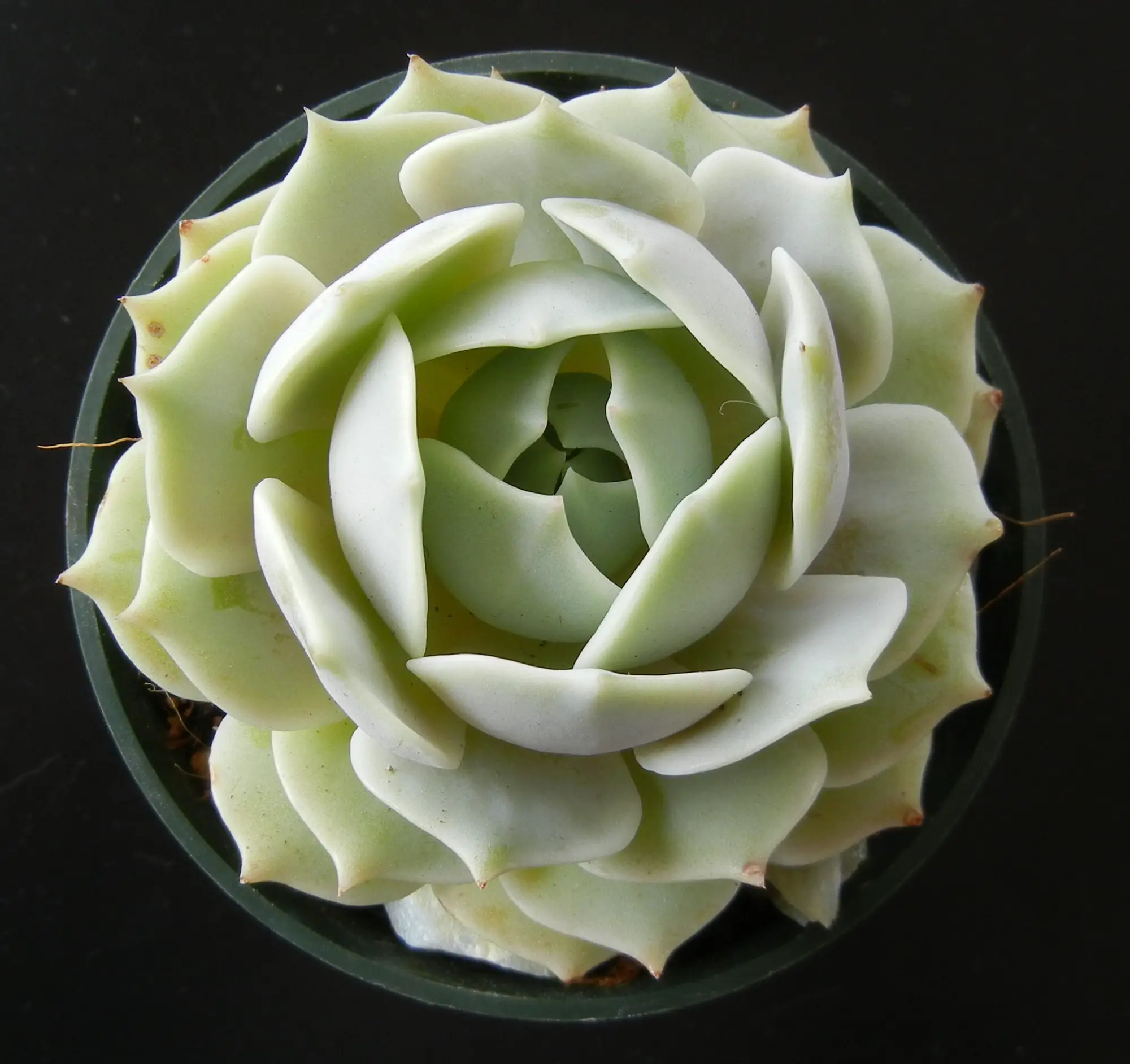
Echeveria ‘Lola’ is a hybrid between Echeveria lilacina and Echeveria derenbergii and was created by hybridizer Dick Wright in 1980. It is one of the most popular and commonly owned types of Echeveria. The compact rosettes grow to a width of about 6 inches and to a height of about 4 inches. During the spring, Echeveria ‘Lola’ will produce yellow, bell-shaped flowers.
26. Echeveria ‘Melaco‘
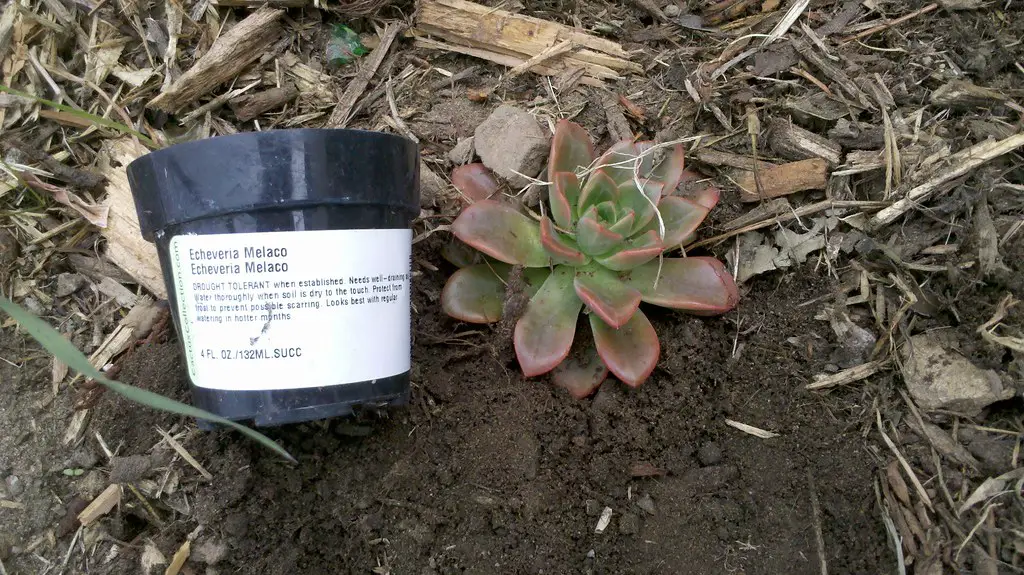
Echeveria ‘Melaco’ is named for its reddish-brown leaves. The word Melaco is Portuguese for molasses. When exposed to enough sunlight, the leaves become a darker color of red. This plant produces bell-shaped flowers that are orange in color. Echeveria ‘Melaco’ is not as widely available as some of the other succulents on this list, but it can be purchased online from places like Etsy or eBay.
27. Echeveria minima

Echeveria minima is named for its small size. The rosettes do not grow any larger than 4 inches. The leaves have well-defined points that tend to be red in color. During the late spring, these plants produce small, bell-shaped flowers that are red and yellow in color.
28. Echeveria nodulosa
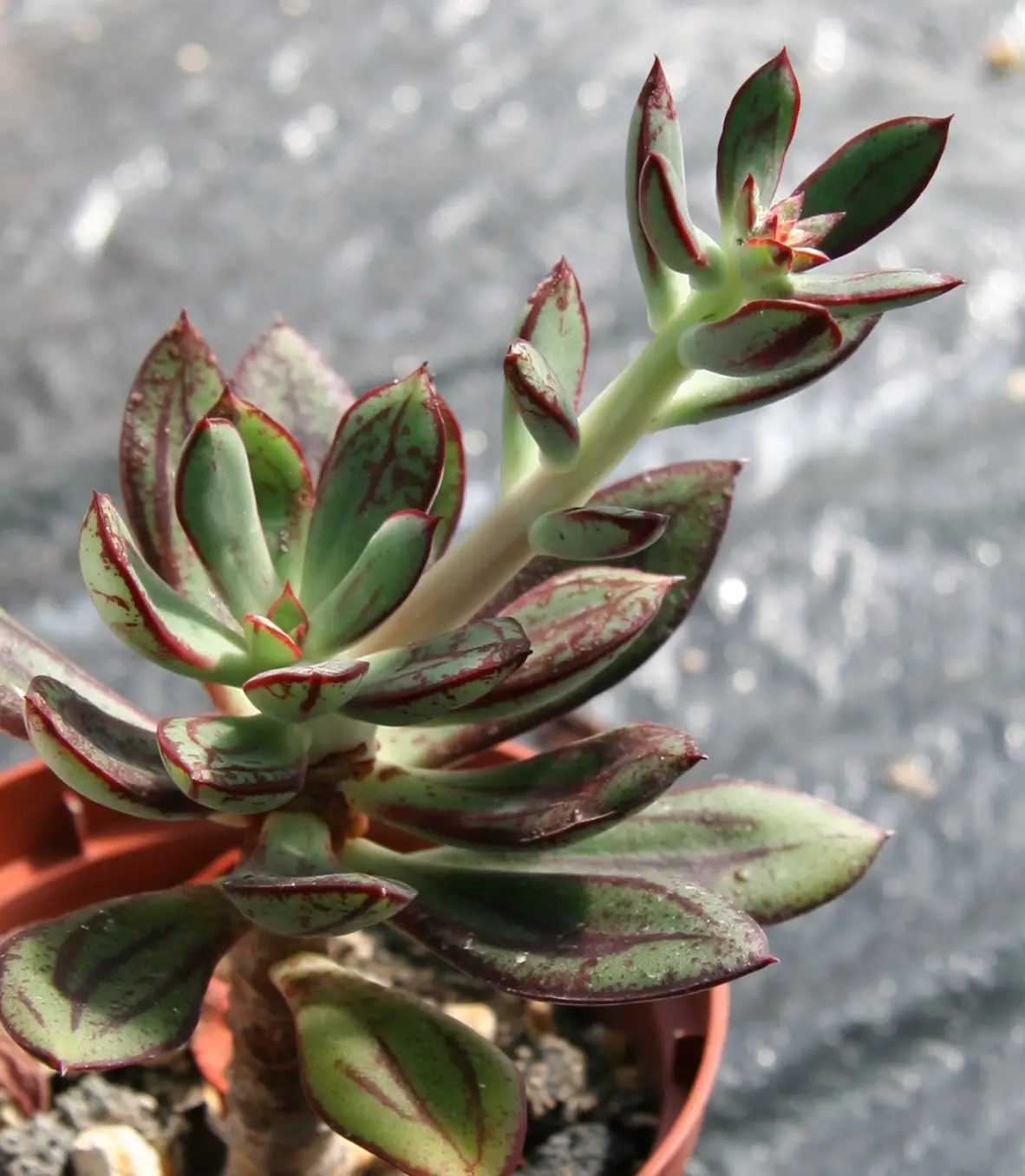
Echeveria nodulosa, which is often referred to as Painted Echeveria, has green leaves and dark red patterning. This succulent produces offsets around a central rosette similar to Sempervivum. Echeveria nodulosa can be found within central Mexico between Oaxaca and Puebla. During the summer, Echeveria nodulosa will produce red blooms.
29. Echeveria peacockii
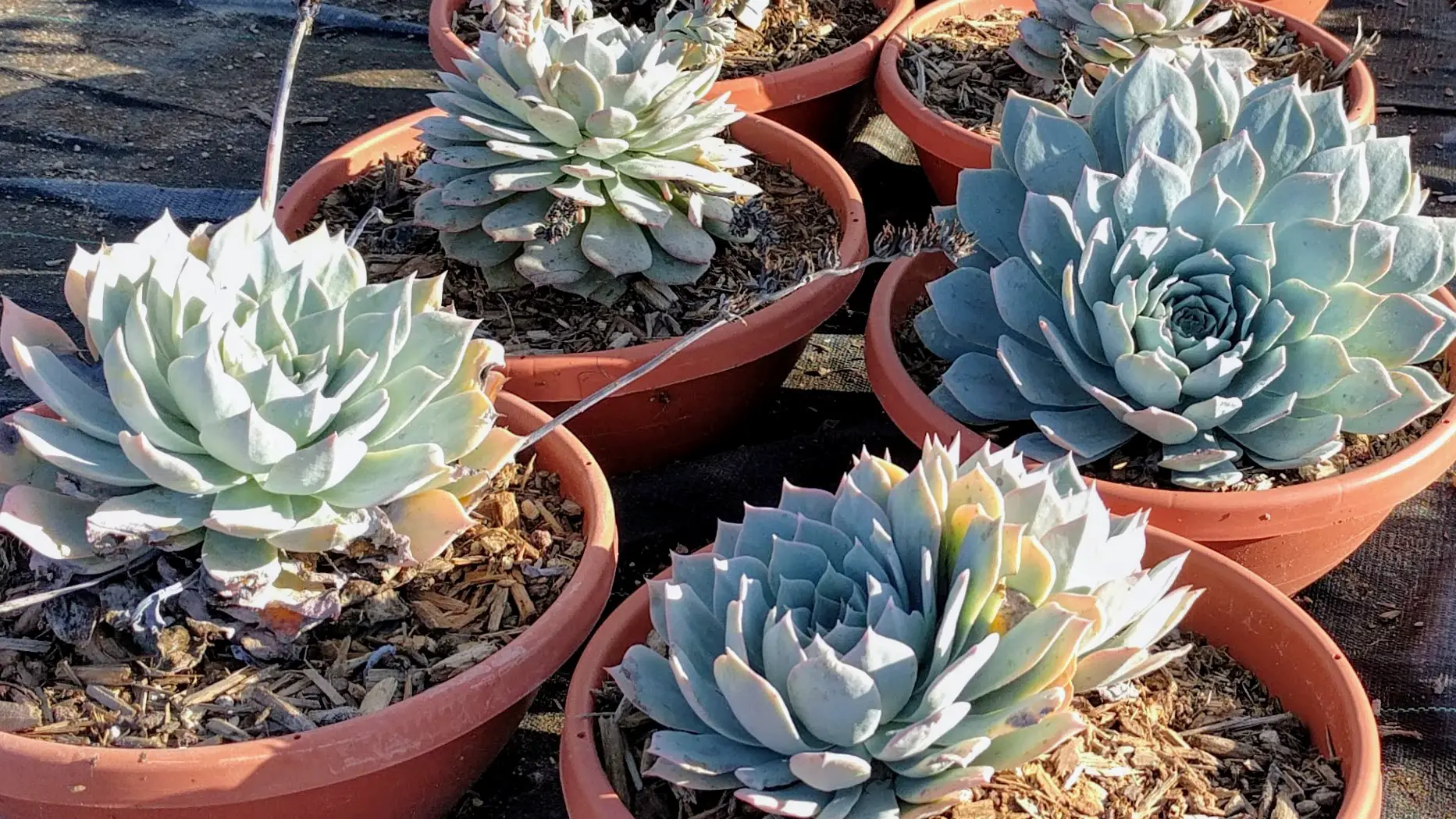
Echeveria peacockii, which is also known as Echeveria desmetiana in Europe, is a rosette comprised of silvery blue leaves. Echeveria peacockii is often found at high altitudes in Mexico. Each rosette grows to a diameter of 6 inches. This type of Echeveria produces offsets freely and will eventually form a dense carpet if given enough space.
30. Echeveria ‘Perle von Nurnberg’
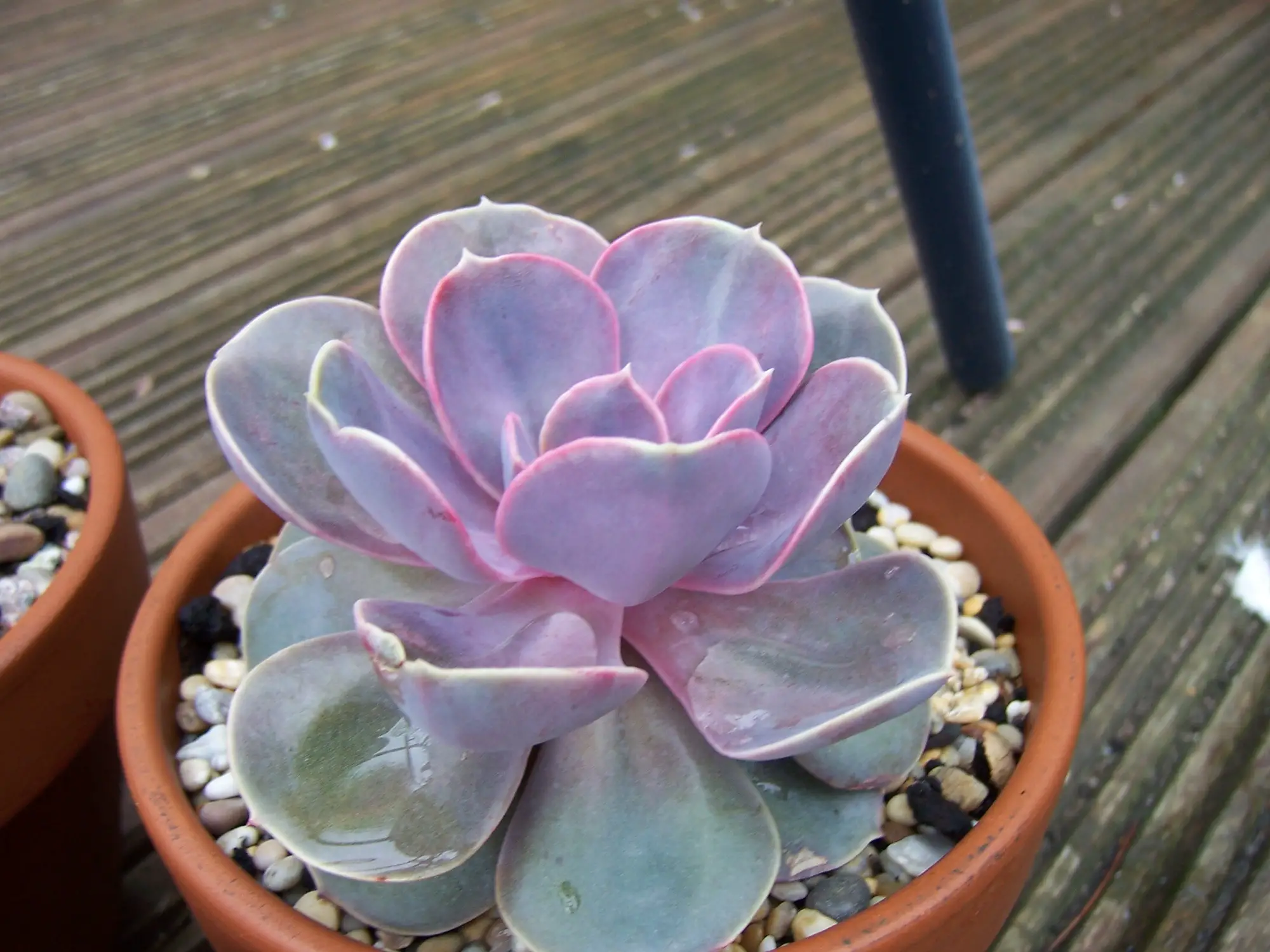
Echeveria ‘Perle von Nurnberg’ is an older hybrid of Echeveria that is well known for its purple and pink tones. This hybrid is a cross between Echeveria gibbiflora ‘Metallica’ and Echeveria elegans. Remove any dead leaves from this plant as they tend to attract pests. This succulent can be propagated easily and quickly which makes it a great option for succulent wedding bouquets.
31. Echeveria pulvinata
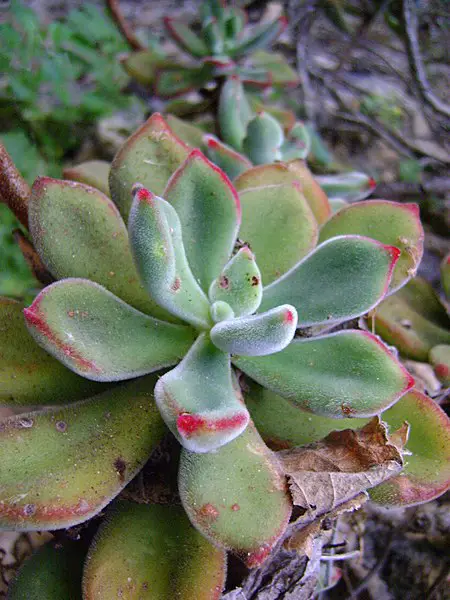
Echeveria pulvinata is a fuzzy succulent that has green leaves with pink edges. The leaves are covered with tiny white hairs that protect the plant from excessive water loss. This succulent can grow to a height of about 12 inches. Echeveria pulvinata produces yellow and orange bell-shaped flowers during the late winter and early spring.
32. Echeveria purpusorum

Echeveria purpusorum, which is a dark green succulent that has spots on its leaves. This succulent grows as a solitary rosette that rarely produces offsets. Echeveria purpusorum grows slowly and only grow to be 3 or 4 inches wide. This plant will produce a 5-inch stem that blooms orange-red flowers.
33. Echeveria runyonii ‘Topsy Turvy’

Echeveria runyonii ‘Topsy Turvy’ is a type of succulent that grows as a stemless rosette. During the late summer and fall, this plant grows an 8-inch arch-shaped stem that blooms yellow and orange bell-shaped flowers. Echeveria runyonii ‘Topsy Turvy’ produces offsets freely and will eventually grow a carpet of rosettes if given enough space. This makes it a perfect succulent for groundcover.
34. Echeveria secunda

Echeveria secunda is an evergreen succulent that is commonly referred to as “Old hens-and-chickens.” It is one of the most common species of succulents and is very hardy. The rosettes grow to a size of about six inches. This plant produces offsets freely and will eventually form a large plant comprised of clumps of rosettes. Echeveria secunda produces red and yellow blooms during the summertime.
35. Echeveria setosa (Mexican Firecracker)
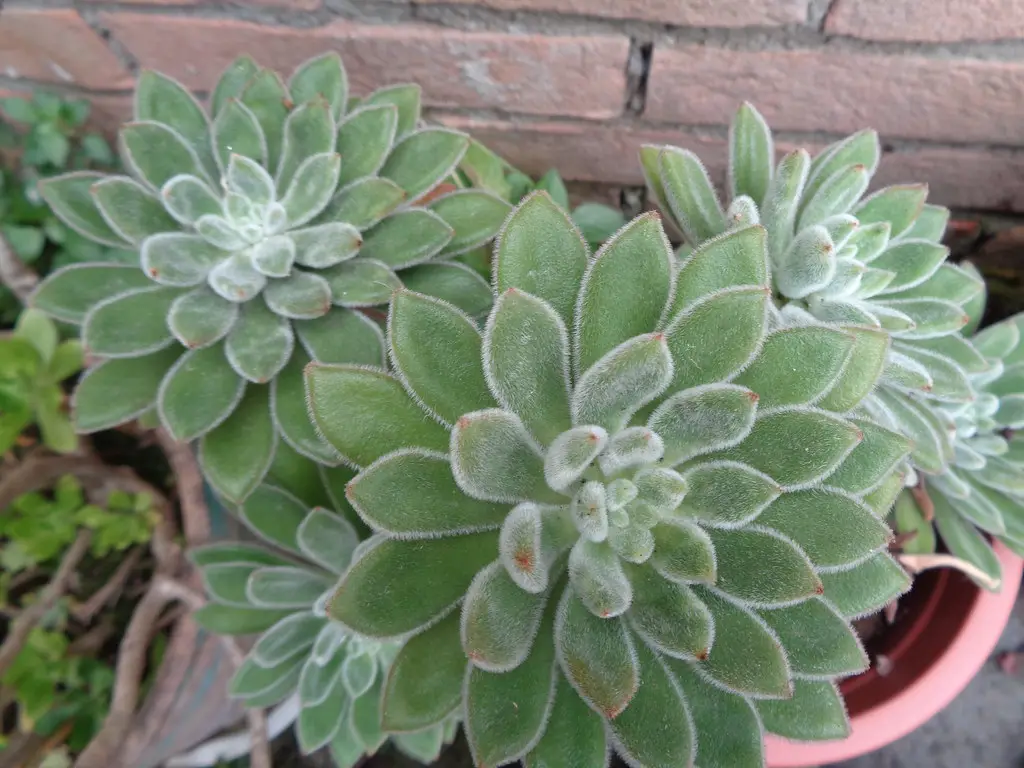
Echeveria setosa, which is commonly referred to as Mexican Firecraker, is a succulent species known for its fuzzy leaves. The white hairs covering the succulent leaves are called glochids which can cause skin irritation. Each rosette can grow up to 5 inches in diameter. During the spring and summer, this plant will produce a stalk containing orange-red flowers with yellow tips.
36. Echeveria shaviana (Mexican Hens)
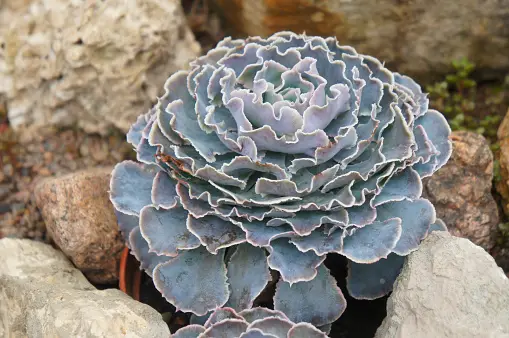
Echeveria shaviana, which is commonly referred to as Mexican Hens, is a succulent species that is native to the mountains of Northern Mexico. A common variety of this plant is Echeveria shaviana ‘Pink Frills’ which has pinkish leaves when exposed to bright light during the summer months. Echeveria shaviana has ruffled leaves that give it a frilly appearance. This plant has earned the Royal Horticultural Society’s Award of Garden Merit
37. Echeveria subrigida

Echeveria subrigida is larger type of Echeveria as the rosettes can grow to a width of about 18 inches. During the spring and summer, this plant will produce flower spikes that can grow as tall as 1-2 feet. The blooms are pink in color. There are several cultivars and hybrids of this species of Echeveria. Examples include Echeveria subrigida ‘Fire and Ice’ and Echeveria subrigida ‘Powder Blue.’
38. Echeveria ‘Tsunami‘
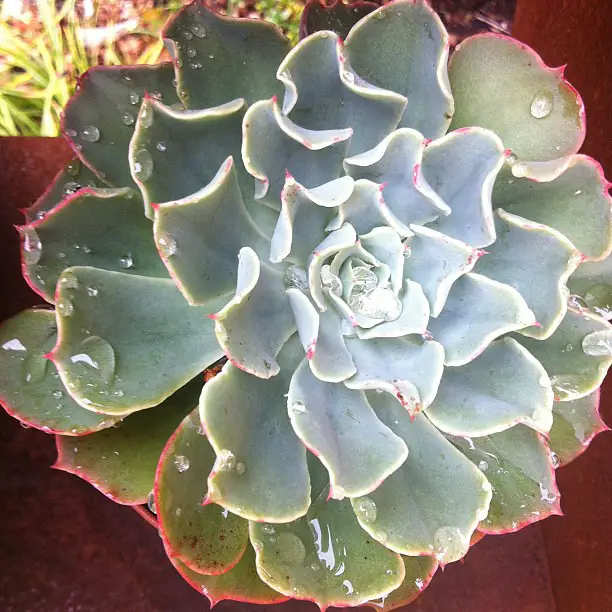
Echeveria ‘Tsunami’ is named for its characteristic wavy leaves. The leaves are mostly green in color, but the tips will turn pink if the plant is exposed to plenty of light.
39. Echeveria ‘Violet Queen’
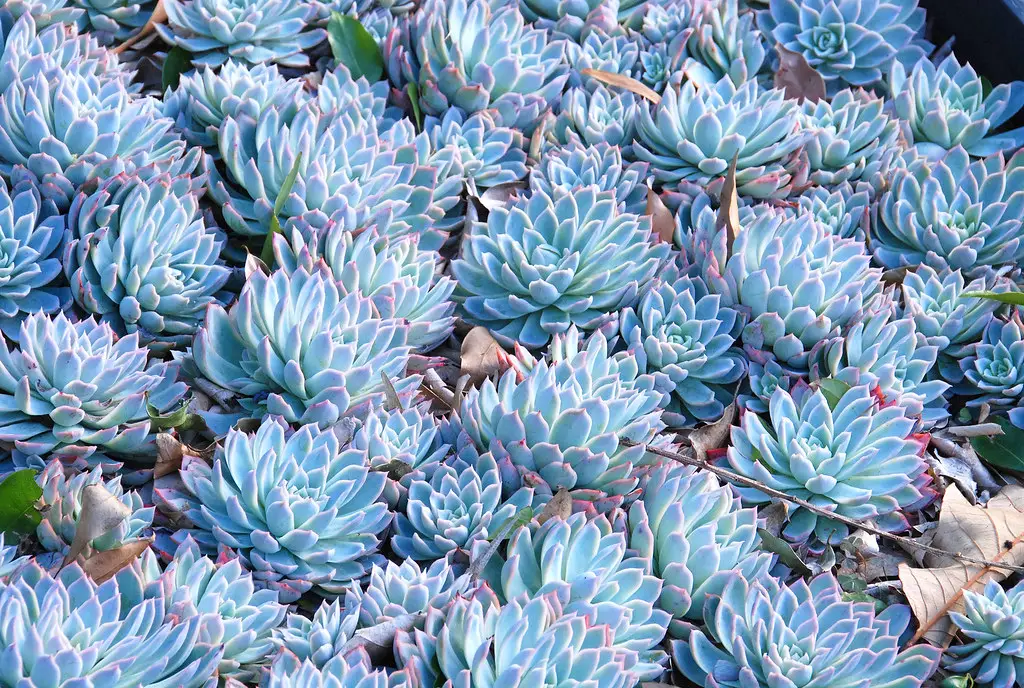
Echeveria ‘Violet Queen’ has a bluish-purple color that it maintains year-round. The edges of the leaves will turn pink if the plant is stressed by bright light. During the spring/summer, it produces pink flowers. This variety of Echeveria can produce many offsets and can develop into clumps spanning several feet wide if given the space.
40. Echeveria ‘White Rose’
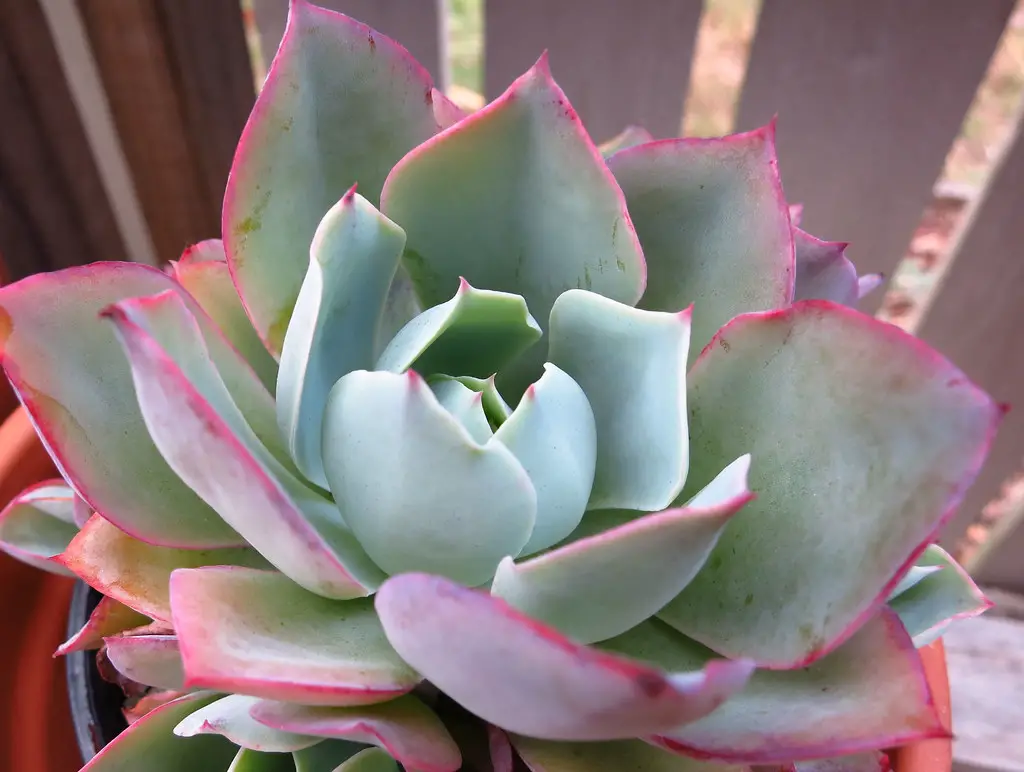
This hybrid Echeveria grows to a width of about four inches. The leaves have a bluish-green tinge and have a pink outline. This plant produces orange, bell-shaped flowers. This plant is different than Echeveria ‘Powder Blue’ which is commonly referred to as White Rose Echeveria.

